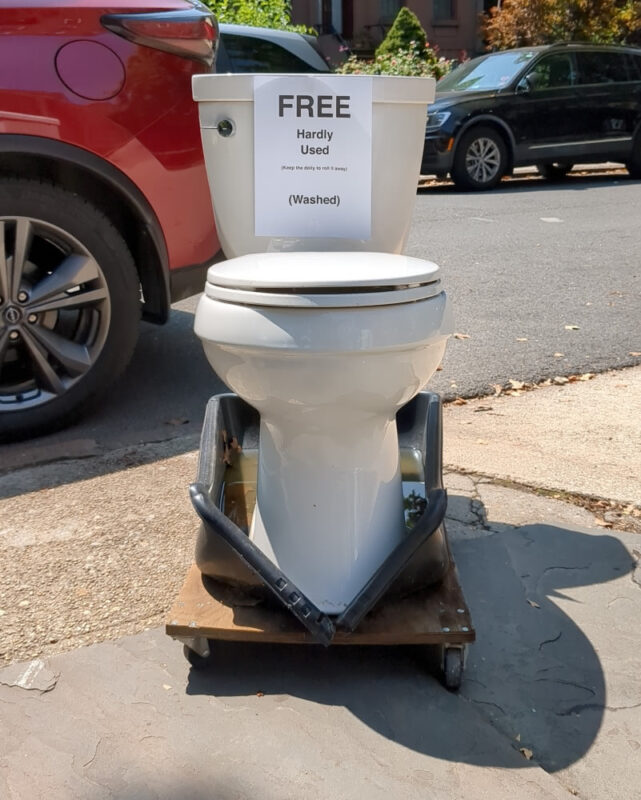I read a January 10, 2025 report on Morning Brew titled Japanese toilet-maker Toto targets US market. I thought to myself that my home toilet, which has been around for a while, is made by Toto. Moreover, I am confident I have seen other Toto toilets. It appears to me that Toto is already decently-well entrenched in the toilet market, which I only just learned from this article now includes toilets with “memory settings for users.” However, I fully concede that I have less expertise in the U.S. toilet market than I do in nice walks through Brooklyn, New York City. If that sounds like an oddly-specific statement that carries with it a whiff of segue in the summer, it is because that is precisely what it is. When I read that Toto wants to double down on its efforts to flush its rivals in the U.S. toilet market, I wondered whether the Japanese toilet and bidet retailer truly understands the environment here. For example, is Toto aware that there are “FREE Hardly Used” toilets on dollies on Brooklyn sidewalks?
I happened upon the above “Hardly Used” and “(Washed)” toilet on a dolly in Carroll Gardens, Brooklyn, on August 24, 2024 – within minutes of photographing a desk with wheels in Carroll Gardens (also with a friendly entreaty to take it home), which was the second of three desks I documented in Three Free Desks in Brooklyn (and a Mirror). While I have no doubt that second-hand toilets are not hard to come by, I never once came by one on a sidewalk in one of Brooklyn’s most expensive residential neighborhoods. While I did not personally inspect the toilet, a surface look did support the “Hardly Used” description – albeit I am not sure why the people who typed and printed the humorous sign reserved “(Washed)” for the end of the note. It was thoughtful of the people who left the toilet out to leave the toilet on a dolly, for I can imagine that carrying the hardly-used toilet home would be uncomfortable in more ways than one (not that rolling the toilet home on a dolly would escape the notice of passers-by, mind you), and notwithstanding promises that it was “Hardly Used” and “washed,” I could see some car-owners hesitating before allowing it to ride in the back seat, much less shot-gun. I suppose a truck of some sort would mitigate these concerns, but pickup trucks are not especially common in New York City, assuming arguendo they are not already full. It occurred to me after reflecting on the scene that some people may have more use for the dolly than the “Hardly Used” toilet, but it would hardly seem right to separate the pair.
I know not what happened to the toilet – only that I returned to the scene not long after and the toilet was gone. Perhaps it found a new home. While writing this, I considered another unanswered question: Why would someone leave a perfectly shiny “Hardly Used toilet” out for the taking? I did not have an answer before reading the article about Toto’s ambitions on establishing toilet supremacy in the United States, but having read the article, I found my answer: The former owners of the “Hardly Used … (Washed)” toilet must have upgraded to one of the new Toto models with “memory settings for users.”
